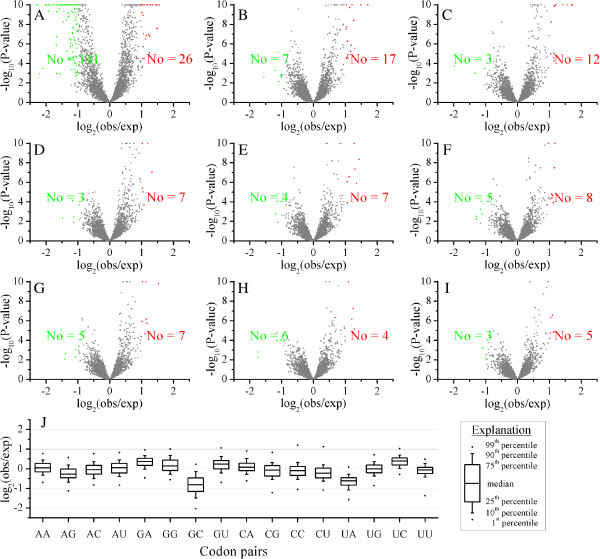Figure 2.

Overview of preferred and avoided codon pairs in Chinese bayberry. A-I) The relationship between observed frequency and expected frequency of 3,721 (61*61) codon pairs (excluding stop codons). The red, green and gray spots represent the preferred codon pairs (with P-value less than 0.01, and the ratio of observed value to expected value larger than 2), avoided codon pairs (with P-value less than 0.01, and the ratio of observed value to expected value smaller than 0.5) and unbiased codon pairs, respectively. The lowest P-value was set as 1E-10. A) The ratio of observed frequency to expected frequency for neighboring codon pairs. The ratio of observed frequency to expected frequency for codon pairs separated by one (B), two (C), three (D), four (E), five (F), six (G), seven (H), eight (I) intervening codons. J) Distribution of the ratio of observed frequency to expected frequency for different neighboring codon pairs. The X axis shows the last nucleotide of the former codon and the first nucleotide of following codon.
